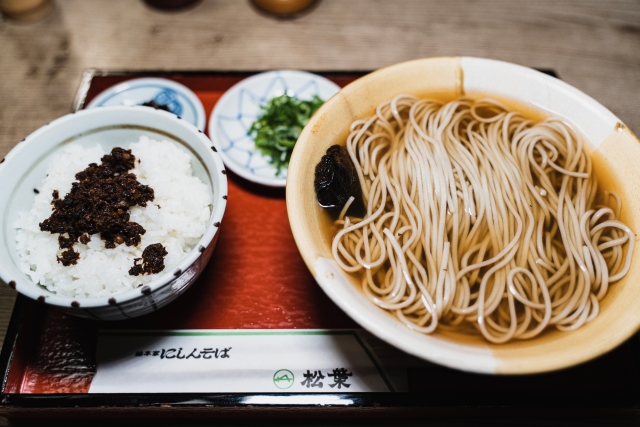
Nishin soba is a Kyoto specialty, but does the restaurant that created it do it best?
For many types of food in Japan, there is said to be a place where it originally came from, a restaurant that pioneered the dish. If you do some research, you can find it.
Nishin soba is a buckwheat noodle dish topped with dried herring that you can sometimes spot at soba restaurants in Japan. It’s pretty much a standard menu item in Kyoto, though, and is said to have been created by the restaurant Kyoto Sohonke Nishin Soba・Matsuba.
▼ The restaurant, located right next to the Shijo Bridge, has been in business since 1861.
We arrived very close to closing time, and the restaurant was completely empty, but we were okay with this, since it made for easier interior photos.
On the table, one of those little “Recommended menu items” placards caught our eye. We picked it up, fully expecting it to recommend nishin soba as its signature dish…
But what it advertised was in fact hiyashi tara soba, or cold soba with cod.
We stared at it, confused for a long time, but then we remembered that these little plaques often have two sides to them. “Oh, right. The nishin soba must be on the other side,” we thought as we flipped it over…
And the other side had the hot version of tara aoba.
Huh? So what they recommend is both the hot and cold tara soba? Seems like they’re pretty passionate about that dish. But isn’t that kind of a slight towards their 161-year-old nishin soba recipe? Maybe they just got tired of it after so long. Or maybe nowadays, for Kyoto-ites, Matsuba is more famous for tara soba. Then should we try the Tara Soba instead?
Our thoughts fell into a maelstrom of indecision and chaos. Was everything we thought we knew about Matsuba wrong? All of our information did come from outside of Kyoto. We didn’t have local insight. Perhaps we should reconsider our original plan…
But when we opened the menu, nishin soba, listed as “herring soba” in English, was the very first item, and that made us feel better. If tara soba had been on the top, we’d have had no choice but to eat that, but since the nishin soba seemed to be highly esteemed–based on its position at the very beginning of the menu, and the fact that it’s in the name of the restaurant–we decided to stick with our original plan and ordered nishin soba.
Very soon, a bowl of nishin soba made by the original nishin soba restaurant arrived. Ours came as a 1,485-yen (US$12.90) set with rice topped with Pacific herring seasoned in mirin, ginger, and soy.
But wait…look at that tiny piece of fish. “Is that all?” Well, it is a recipe from the Bunkyu Era (1861-1864)…times were hard then.
Oh, wait…
Woah!!
It was super long!!
From the look of it, we expected it to be on the firm side, especially since it held its shape when we picked it up with chopsticks. But when we took a bite out of it, it broke apart pretty easily, though it had a solid texture. Since it was such a dark color, we also expected it to have a very strong flavor, but it was actually pretty light and paired well with the soba.
The soba itself was much smoother in texture, and softer, than the soba we usually get at restaurants in the Tokyo area. The broth was also on the lighter side, with dashi being the most prominent flavor. It paired really well with the accompanying rice and herring. Before we knew it, we’d drank it all.
All in all, there was nothing new or shocking about this bowl of Nishin Soba, but that’s what’s good about it. It’s a traditional recipe with authentic flavor. It’s somehow reassuring how predictable, yet tasty, it is.
A lot of restaurants these days launch flashy dish after flashy dish that wow for a moment and then disappear as fast as a firecracker, but this kind of unsophisticated dish is forever. It’s the type of dish you could suddenly feel like eating on a perfectly ordinary day. It was similar to how we felt after eating a recreation of the first-ever ramen in Japan. Sometimes it’s in simplicity where true deliciousness lies.
Restaurant information
Kyoto Sohonke Nishin・Matsuba (Main branch) / 京都 総本家にしんそば・松葉(本店)
Kyoto-fu, Kyoto-shi, Higashiyama-ku, Shijo Ohashi Higashi-iru Kawabatacho 192
京都府京都市東山区四条大橋東入ル川端町192
Open 11 a.m.-7 p.m. (last order at 6:45)
Closed; Wednesdays and Thursdays (may change for holidays depending on the season, also subject to change depending on the state of the pandemic)
Website
Photos © SoraNews24
● Want to hear about SoraNews24’s latest articles as soon as they’re published? Follow us on Facebook and Twitter!
[ Read in Japanese ]

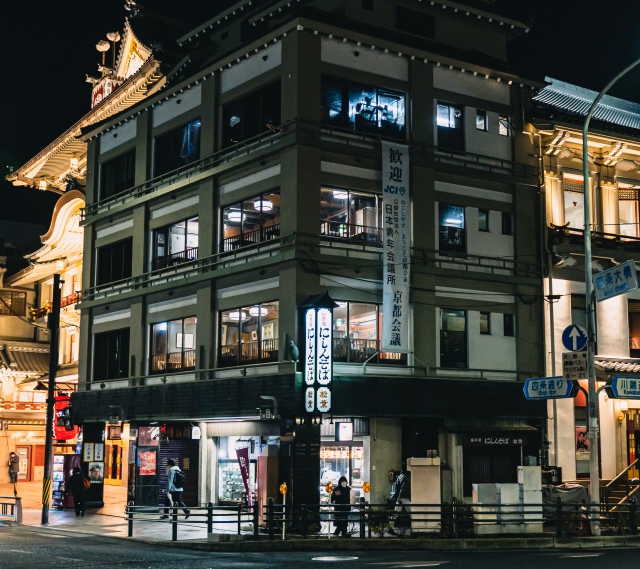
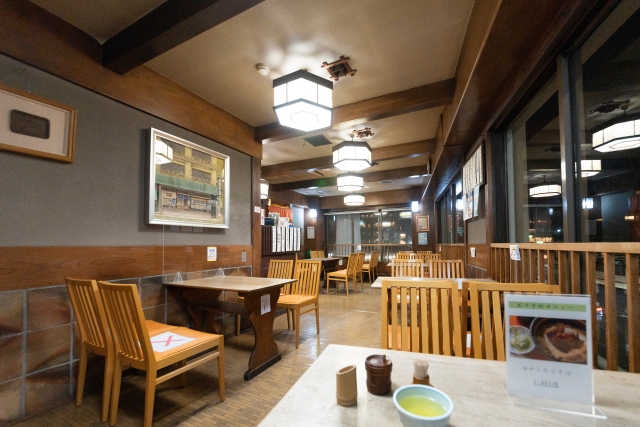
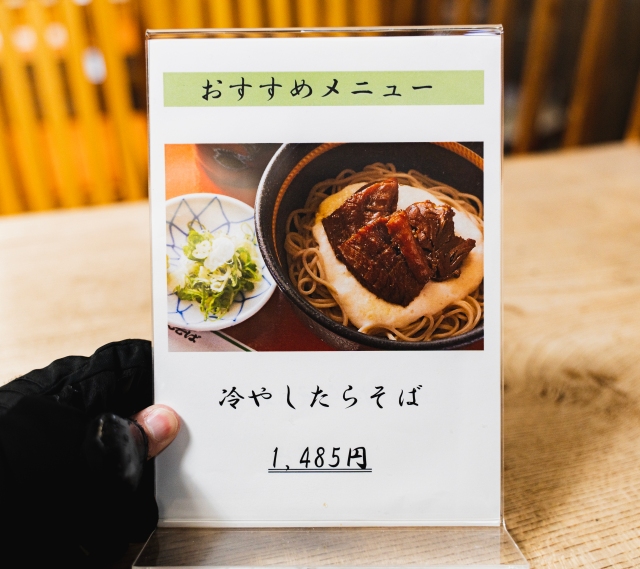
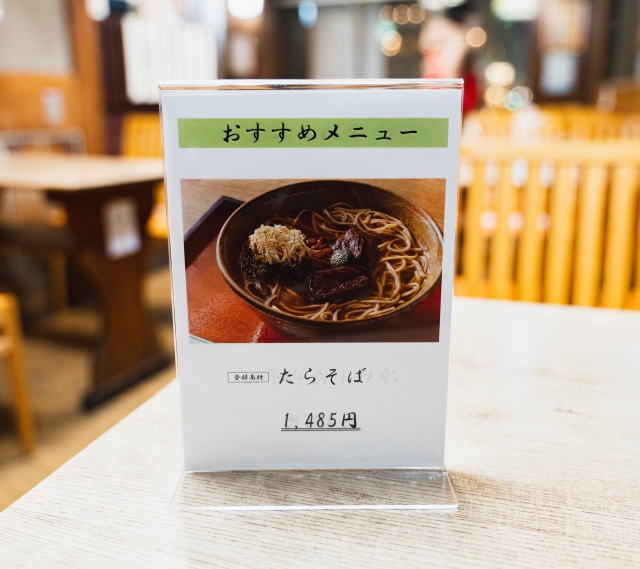
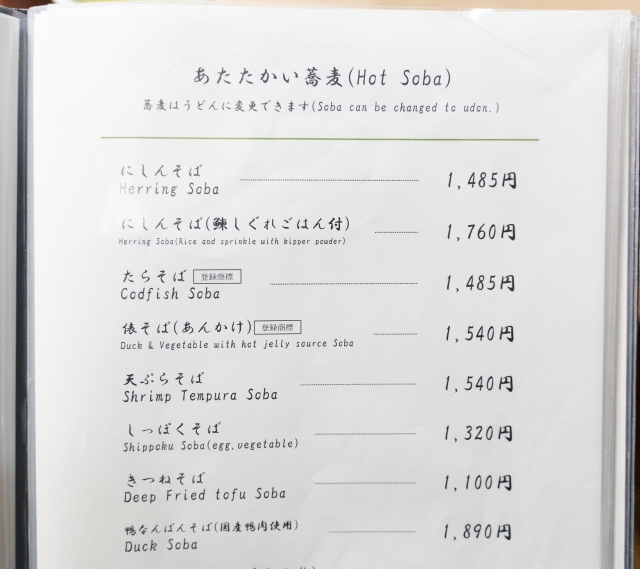
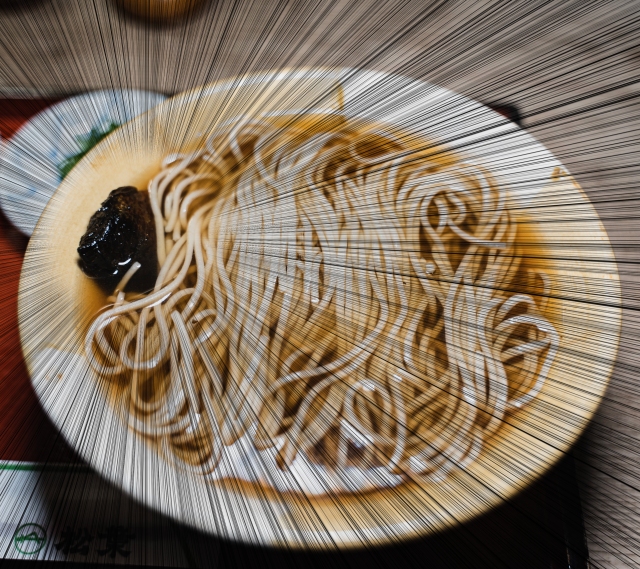

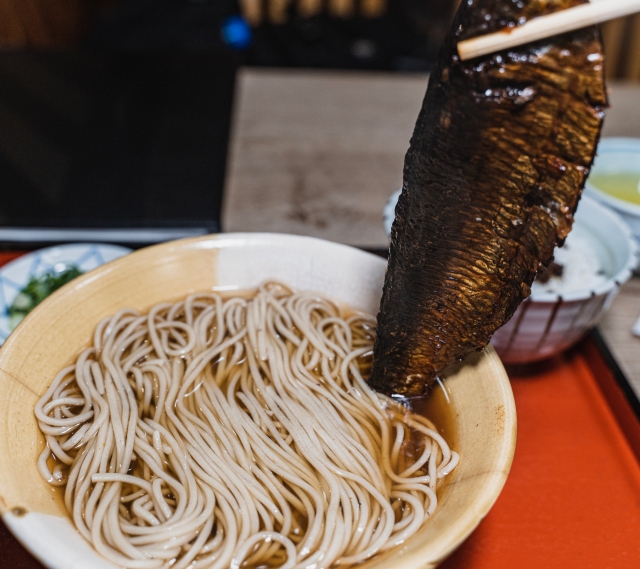
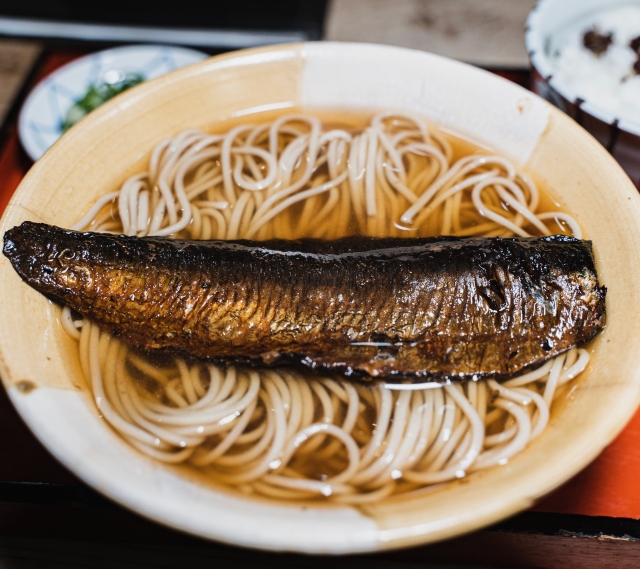
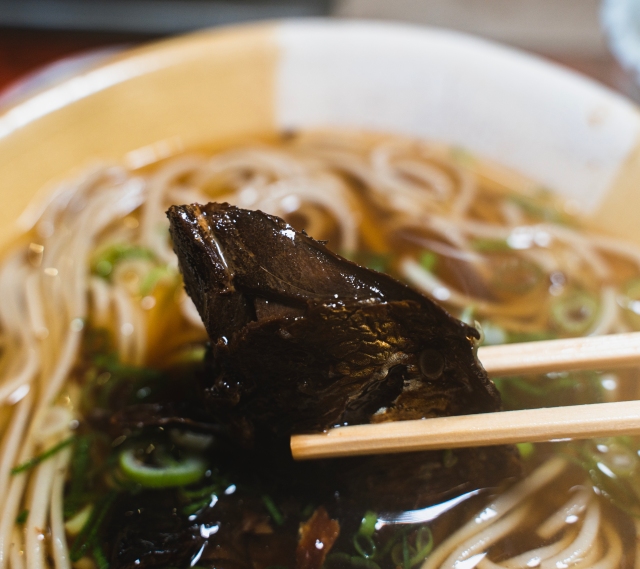

 What the heck is okame soba?
What the heck is okame soba? Japanese comedian parodies Trump, instructs noodle-loving Kyotoites to “Get out of here!”【Video】
Japanese comedian parodies Trump, instructs noodle-loving Kyotoites to “Get out of here!”【Video】 Which noodles, other than Okinawa soba, pair best with Okinawa soba broth?【Taste Test】
Which noodles, other than Okinawa soba, pair best with Okinawa soba broth?【Taste Test】 We find Italian Soba at an Aomori fish market that insisted it’s perfect for the beach
We find Italian Soba at an Aomori fish market that insisted it’s perfect for the beach What part of Japan has the best food, and what should you eat there?
What part of Japan has the best food, and what should you eat there? Red light district sushi restaurant in Tokyo shows us just how wrong we were about it
Red light district sushi restaurant in Tokyo shows us just how wrong we were about it Historical figures get manga makeovers from artists of Spy x Family, My Hero Academia and more
Historical figures get manga makeovers from artists of Spy x Family, My Hero Academia and more Akihabara pop-up shop sells goods made by Japanese prison inmates
Akihabara pop-up shop sells goods made by Japanese prison inmates Pokémon Sleep camping suite and guestrooms coming to Tokyo Hyatt along with giant Snorlax burgers
Pokémon Sleep camping suite and guestrooms coming to Tokyo Hyatt along with giant Snorlax burgers Sandwiches fit for a sumo served up in Osaka【Taste Test】
Sandwiches fit for a sumo served up in Osaka【Taste Test】 Tokyo Tsukiji fish market site to be redeveloped with 50,000-seat stadium, hotel, shopping center
Tokyo Tsukiji fish market site to be redeveloped with 50,000-seat stadium, hotel, shopping center McDonald’s new Happy Meals offer up cute and practical Sanrio lifestyle goods
McDonald’s new Happy Meals offer up cute and practical Sanrio lifestyle goods Beautiful Red and Blue Star luxury trains set to be Japan’s new Hokkaido travel stars
Beautiful Red and Blue Star luxury trains set to be Japan’s new Hokkaido travel stars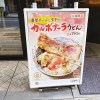 Limited-edition Carbonara Udon will anger noodle purists and pasta lovers 【Taste test】
Limited-edition Carbonara Udon will anger noodle purists and pasta lovers 【Taste test】 Anime girl English teacher Ellen-sensei becomes VTuber/VVTUber and NFT
Anime girl English teacher Ellen-sensei becomes VTuber/VVTUber and NFT All-you-can-drink Starbucks and amazing views part of Tokyo’s new 170 meter-high sky lounge
All-you-can-drink Starbucks and amazing views part of Tokyo’s new 170 meter-high sky lounge More foreign tourists than ever before in history visited Japan last month
More foreign tourists than ever before in history visited Japan last month Japanese ramen restaurants under pressure from new yen banknotes
Japanese ramen restaurants under pressure from new yen banknotes French Fries Bread in Tokyo’s Shibuya becomes a hit on social media
French Fries Bread in Tokyo’s Shibuya becomes a hit on social media Studio Ghibli releases new action figures featuring Nausicaä of the Valley of the Wind characters
Studio Ghibli releases new action figures featuring Nausicaä of the Valley of the Wind characters New private rooms on Tokaido Shinkansen change the way we travel from Tokyo to Kyoto
New private rooms on Tokaido Shinkansen change the way we travel from Tokyo to Kyoto Starbucks reopens at Shibuya Scramble Crossing with new look and design concept
Starbucks reopens at Shibuya Scramble Crossing with new look and design concept Studio Ghibli glasses cases let anime characters keep an eye on your spectacles
Studio Ghibli glasses cases let anime characters keep an eye on your spectacles Beautiful Ghibli sealing wax kits let you create accessories and elegant letter decorations【Pics】
Beautiful Ghibli sealing wax kits let you create accessories and elegant letter decorations【Pics】 Studio Ghibli releases Kiki’s Delivery Service chocolate cake pouches in Japan
Studio Ghibli releases Kiki’s Delivery Service chocolate cake pouches in Japan New definition of “Japanese whiskey” goes into effect to prevent fakes from fooling overseas buyers
New definition of “Japanese whiskey” goes into effect to prevent fakes from fooling overseas buyers Our Japanese reporter visits Costco in the U.S., finds super American and very Japanese things
Our Japanese reporter visits Costco in the U.S., finds super American and very Japanese things Studio Ghibli unveils Mother’s Day gift set that captures the love in My Neighbour Totoro
Studio Ghibli unveils Mother’s Day gift set that captures the love in My Neighbour Totoro New Japanese KitKat flavour stars Sanrio characters, including Hello Kitty
New Japanese KitKat flavour stars Sanrio characters, including Hello Kitty New Pokémon cakes let you eat your way through Pikachu and all the Eevee evolutions
New Pokémon cakes let you eat your way through Pikachu and all the Eevee evolutions Disney princesses get official manga makeovers for Manga Princess Cafe opening in Tokyo
Disney princesses get official manga makeovers for Manga Princess Cafe opening in Tokyo Sales of Japan’s most convenient train ticket/shopping payment cards suspended indefinitely
Sales of Japan’s most convenient train ticket/shopping payment cards suspended indefinitely Sold-out Studio Ghibli desktop humidifiers are back so Totoro can help you through the dry season
Sold-out Studio Ghibli desktop humidifiers are back so Totoro can help you through the dry season Japanese government to make first change to romanization spelling rules since the 1950s
Japanese government to make first change to romanization spelling rules since the 1950s Ghibli founders Toshio Suzuki and Hayao Miyazaki contribute to Japanese whisky Totoro label design
Ghibli founders Toshio Suzuki and Hayao Miyazaki contribute to Japanese whisky Totoro label design Doraemon found buried at sea as scene from 1993 anime becomes real life【Photos】
Doraemon found buried at sea as scene from 1993 anime becomes real life【Photos】 Tokyo’s most famous Starbucks is closed
Tokyo’s most famous Starbucks is closed One Piece characters’ nationalities revealed, but fans have mixed opinions
One Piece characters’ nationalities revealed, but fans have mixed opinions We asked a Uniqlo employee what four things we should buy and their suggestions didn’t disappoint
We asked a Uniqlo employee what four things we should buy and their suggestions didn’t disappoint Princesses, fruits, and blacksmiths: Study reveals the 30 most unusual family names in Japan
Princesses, fruits, and blacksmiths: Study reveals the 30 most unusual family names in Japan Marvelous Soba: Colour-changing noodle broth creates a twist ending to your meal
Marvelous Soba: Colour-changing noodle broth creates a twist ending to your meal Want some carbs with your carbs? Japanese noodle restaurant offering bread soba
Want some carbs with your carbs? Japanese noodle restaurant offering bread soba We try cooking yakisoba with real Japanese buckwheat soba【SoraKitchen】
We try cooking yakisoba with real Japanese buckwheat soba【SoraKitchen】 Japan’s first-ever wanko soba conveyor belt restaurant opens in Tokyo
Japan’s first-ever wanko soba conveyor belt restaurant opens in Tokyo Asakusa luxury – the best matsutake soba we’ve ever had at a price that can’t be beat
Asakusa luxury – the best matsutake soba we’ve ever had at a price that can’t be beat Why did this stand-and-eat soba noodle shop in Tokyo open in the middle of the pandemic?
Why did this stand-and-eat soba noodle shop in Tokyo open in the middle of the pandemic? What does a family restaurant in the middle of nowhere, Hokkaido, serve? We find out
What does a family restaurant in the middle of nowhere, Hokkaido, serve? We find out Robot-operated soba stand in Tokyo is too busy for its machine chef to keep up with
Robot-operated soba stand in Tokyo is too busy for its machine chef to keep up with We eat at the legendary Negidon, a Tokyo soba restaurant that’s only open for lunch on weekdays
We eat at the legendary Negidon, a Tokyo soba restaurant that’s only open for lunch on weekdays Shibuya City Office serves up insanely cheap soba noodles, but are they any good?
Shibuya City Office serves up insanely cheap soba noodles, but are they any good? “Hey, Japanese taxi driver, take us to the best Yaeyama soba noodles on Ishigaki Island!”
“Hey, Japanese taxi driver, take us to the best Yaeyama soba noodles on Ishigaki Island!” We check out Kawaichi, a crazy good soba shop in Akihabara
We check out Kawaichi, a crazy good soba shop in Akihabara Check if you have a soba allergy with these amazing ukiyoe-print temporary tattoos!
Check if you have a soba allergy with these amazing ukiyoe-print temporary tattoos! Kakiage towers and Italian soba? We try out a unique soba restaurant in Tokyo
Kakiage towers and Italian soba? We try out a unique soba restaurant in Tokyo Japanese restaurant chain shows us how to make katsudon in three minutes【SoraKitchen】
Japanese restaurant chain shows us how to make katsudon in three minutes【SoraKitchen】 Hey, have you eaten the news? – Japanese “noodle newspaper” comes with writing on the soba
Hey, have you eaten the news? – Japanese “noodle newspaper” comes with writing on the soba
Leave a Reply